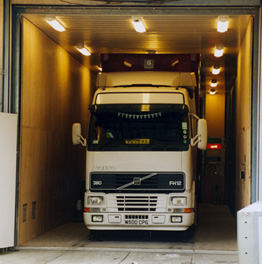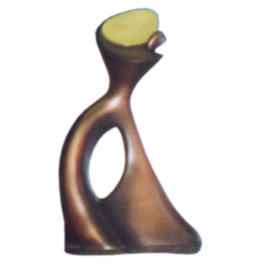In 1998, 268 years after it was built, the Royal Opera House in London’s vibrant Convent Garden was given a ‘face lift’, and Alimak was there to help. A major item in this redevelopment works was an Alimak ‘Get In’ elevator, which became the major artery of the stage works.
The Royal Opera House is a Repertory theatre demanding frequent scenery changes depending upon the programme which may vary nightly. Handling the sets in an exacting and precise operation, with part of this operation being to transport the scenery up to the stage level, and this is where Alimak engineers were called in to design an elevator large enough to cope with pallets up to 10 m long. The bulk of the ROH scenery is stored in a warehouse in Wales and bought to the Theatre in trailers in advance of the season’s productions. Manoeuvring 10m pallets in the streets is a major operation, and it was felt that it would be much easier if the lorry and trailer could be driven into the theatre for unloading. So that’s exactly what Alimak did, by designing and installing the ‘Get In’ lift!
The quad-masted rack & pinion driven elevator is 18 m long and 4.7 m high, with a maximum carrying capacity of 24 tonnes! A fully loaded trailer and reactor can therefore be driven straight in from the street and lowered 14 m to bottom level for unloading. When not engaged in its main task of moving scenery pallets, the elevator functions as a general purpose elevator servicing three levels below the stage. The elevator starts at street level (S-1), descends to S-3, 14 m below where it serves the scenery store and also a new 450 seat auditorium. An intermediate level, S-2, is where the waste skip is loaded, taken to street level, and removed by a skip lorry away from the street ensuring minimal disruption. The elevator is fitted with doors on three sides, east, west and north; the north side having a 10m wide clear opening. At each landing the
The quad-masted rack & pinion driven elevator is 18 m long and 4.7 m high, with a maximum carrying capacity of 24 tonnes! A fully loaded trailer and reactor can therefore be driven straight in from the street and lowered 14 m to bottom level for unloading. When not engaged in its main task of moving scenery pallets, the elevator functions as a general purpose elevator servicing three levels below the stage. The elevator starts at street level (S-1), descends to S-3, 14 m below where it serves the scenery store and also a new 450 seat auditorium. An intermediate level, S-2, is where the waste skip is loaded, taken to street level, and removed by a skip lorry away from the street ensuring minimal disruption. The elevator is fitted with doors on three sides, east, west and north; the north side having a 10m wide clear opening. At each landing the lift can be levelled to accommodate the varying contents.
can be levelled to accommodate the varying contents.
ELEVATOR DETAILS
Location: The Royal Opera House, London, UK
Application: Opera House
Elevator type: Rack and Pinion
Elevator model: Alimak Customised
Capacity: 24,000 kg
Elevator car size: 4.8 m x 18 m x 4.7 m (W x L x H)
Speed: 9 m/min
Machinery: 24 motors, each 4 kW (96 kW)
Lifting height: 14.1 m
No. of landings: 3
No. of mast towers: 4



